The cooler days of autumn often bring a familiar urge: the desire to tidy your garden, trimming back spent plants and clearing beds. Many gardeners see this annual chore as a way to prepare for winter, a clean slate before the snow falls or the temperatures drop. However, for those of us with small spaces like balconies and patios, and a passion for supporting local ecosystems, there is a more beneficial, and surprisingly easier, approach. This method, which we call “Leave It Be,” transforms your fall garden cleanup for wildlife into a simple, hands-off practice. It involves purposefully leaving certain plants standing through the colder months, creating a vital food source and shelter for birds when resources are scarce.
Imagine your balcony garden, not as something to be meticulously cleared, but as a living larder and sanctuary. When you resist the urge to cut back, you offer a lifeline to birds navigating the harsh realities of winter. This low-maintenance strategy not only saves you time and effort but also turns your small outdoor area into a dynamic habitat. You provide crucial sustenance in the form of seeds, attracting a delightful array of feathered visitors right to your doorstep. This article guides you through the simple “Leave It Be” method, identifying specific plants that thrive in containers and offer the best winter interest plants for feeding birds in winter on your balcony. You will discover how this small shift in your gardening routine makes a significant positive impact on local wildlife, creating a vibrant, living ecosystem even in the quietest season.
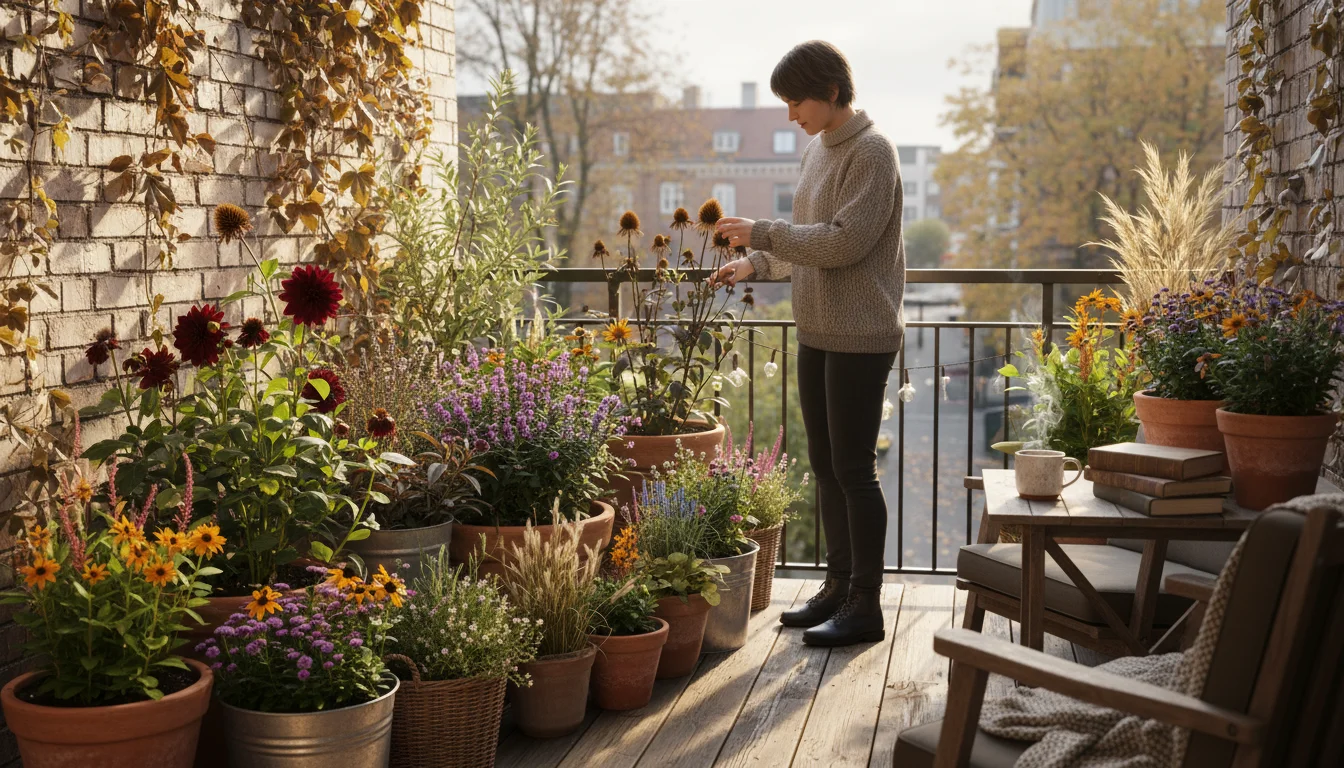
The Autumn Garden Tidy-Up Myth: Rethinking Your Fall Chores
For generations, gardeners learned to meticulously clean up their beds in the fall. You probably received advice to cut back perennials, rake leaves, and generally prepare for winter by leaving nothing behind. This tradition often stems from a desire for neatness and a belief it prevents pests or diseases. However, modern understanding of ecological gardening reveals this practice, while seemingly tidy, can be detrimental to your local environment, particularly for wildlife gardening.
Think about a wild meadow or forest. Nature does not “clean up” in the fall. Instead, it leaves spent plant material standing, forming an intricate web of shelter and food. When you apply this natural principle to your balcony, you unlock a wealth of benefits. Trimming everything back removes valuable resources that birds, beneficial insects, and other small creatures depend on for survival during the lean winter months. Your perception of a “messy” garden can actually translate to a rich, supportive habitat.
Many traditional gardening guides suggest cutting back herbaceous perennials to a few inches above the ground once they finish blooming or frost hits. The rationale often includes disease prevention by removing infected foliage, tidiness for aesthetic appeal, and sometimes even the idea it promotes stronger spring growth. However, extensive research and observation show that many diseases overwinter in the soil or on plant debris only if the conditions are right, and a healthy plant often withstands minimal overwintering disease pressure. Furthermore, while some plants benefit from being cut back for renewed vigor, many others gain structural integrity and natural protection by retaining their growth.
For small-space gardeners, this rethink is particularly empowering. You might feel limited by your balcony’s size, but by adopting the ‘Leave It Be’ method, you maximize its ecological potential without expanding its footprint. This isn’t about neglecting your plants; it is about understanding their full lifecycle and appreciating how spent blossoms and dried stems offer a lifeline to winter wildlife. You redefine what “clean” means for your garden, shifting from a sterile aesthetic to a vibrant, functional ecosystem.
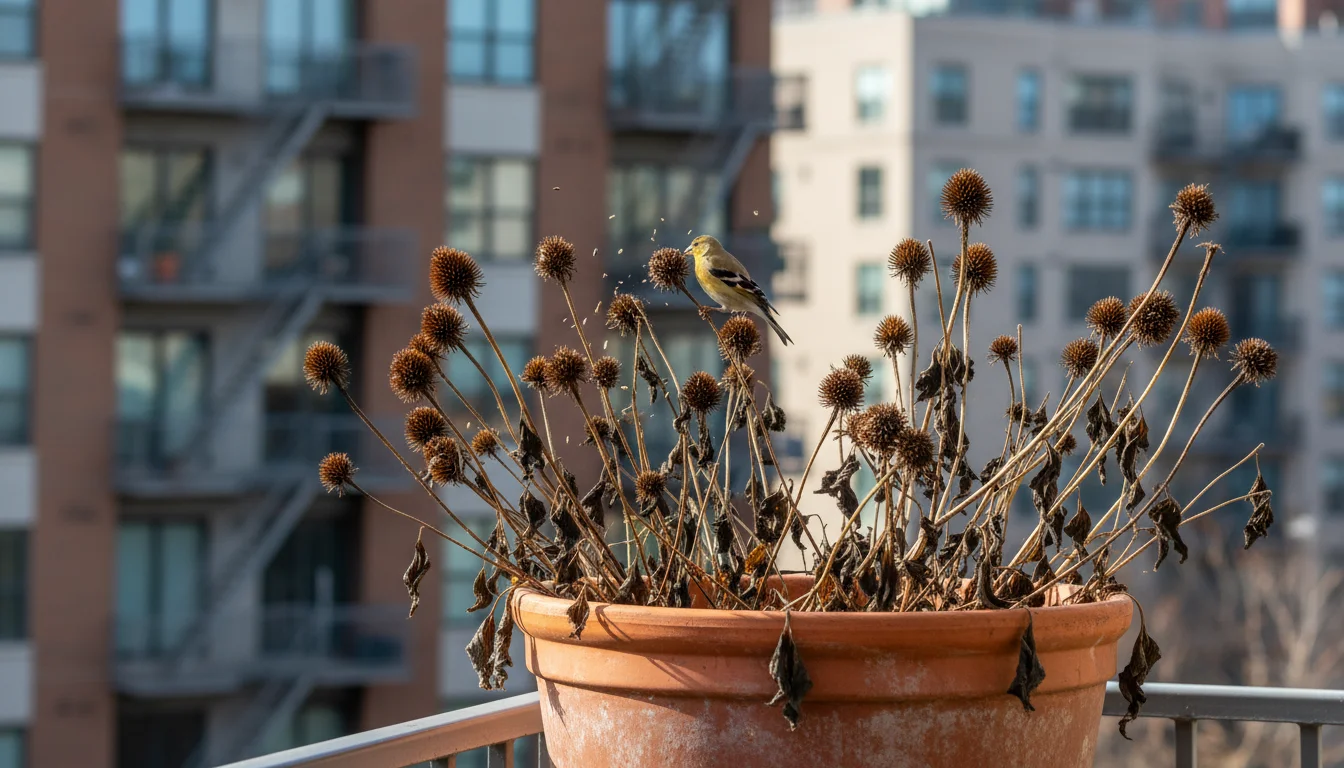
Why ‘Leave It Be’ Matters: Fueling Your Balcony’s Winter Wildlife
The decision to leave certain plants standing through fall and winter extends far beyond a simple aesthetic choice. It represents a commitment to environmental stewardship and directly impacts the survival of local wildlife, especially birds. When you embrace the ‘Leave It Be’ method, you transform your balcony from a temporary floral display into a crucial support system.
**A Critical Food Source:** The most immediate and significant benefit is providing food. Many plants, after flowering, produce seed heads packed with nutritious seeds. Goldfinches, chickadees, juncos, and sparrows rely on these seeds to fuel their high metabolisms during cold weather. Without your garden’s contribution, these birds must expend more energy searching for scarce natural food sources, or compete more fiercely for limited offerings at bird feeders. A study by the Cornell Lab of Ornithology highlights the critical role of native plants in providing a sustained food supply for birds, particularly during winter. Leaving seed heads for birds means your garden continues to feed hungry mouths long after other food sources disappear.
**Essential Shelter and Protection:** Beyond food, the remaining stalks and dried foliage offer vital shelter. Small birds like wrens and chickadees find refuge among dense, dried stems from harsh winds, snow, and predators. These structures provide insulated pockets and hidden nooks where birds can roost and conserve energy. This natural architecture also protects overwintering insects, which, in turn, become an additional food source for insectivorous birds later in the winter or in early spring.
**Supporting Beneficial Insects:** Many beneficial insects, including pollinators, do not simply vanish in winter. Some species, like certain native bees and ladybugs, overwinter as eggs, larvae, or adults in hollow stems, leaf litter, and the base of perennial plants. When you cut back and clear away all plant material, you inadvertently remove these crucial overwintering sites, reducing their populations and the ecological services they provide, such as pollination and pest control, in the following spring. Leaving your plant stems standing ensures these valuable insects have safe places to survive the cold.
**Low-Maintenance Gardening:** For you, the gardener, the “Leave It Be” method offers a tangible benefit: less work. Skipping the extensive fall cleanup frees up your time and energy. You no longer need to spend hours trimming, bagging, and disposing of plant debris. This aligns perfectly with the ethos of low-maintenance gardening for small spaces, allowing you to enjoy your garden’s continued contribution without the heavy labor. You get to observe the beauty of your garden transforming for winter and watch the birds enjoy its bounty.
**Enhanced Winter Interest:** Aesthetically, leaving plants standing adds unique winter interest. The dried seed heads, frost-kissed stems, and skeletal forms create texture, height, and visual appeal in your winter garden, often catching the low winter sun beautifully. This natural art provides a more dynamic and engaging view than bare, empty containers. It demonstrates that a garden can be beautiful and productive in every season.
By embracing this approach, you actively participate in `wildlife gardening`, offering a sanctuary and sustenance that few other actions can provide. You contribute to the resilience of local bird populations, turning your small balcony into a powerful example of environmental responsibility.
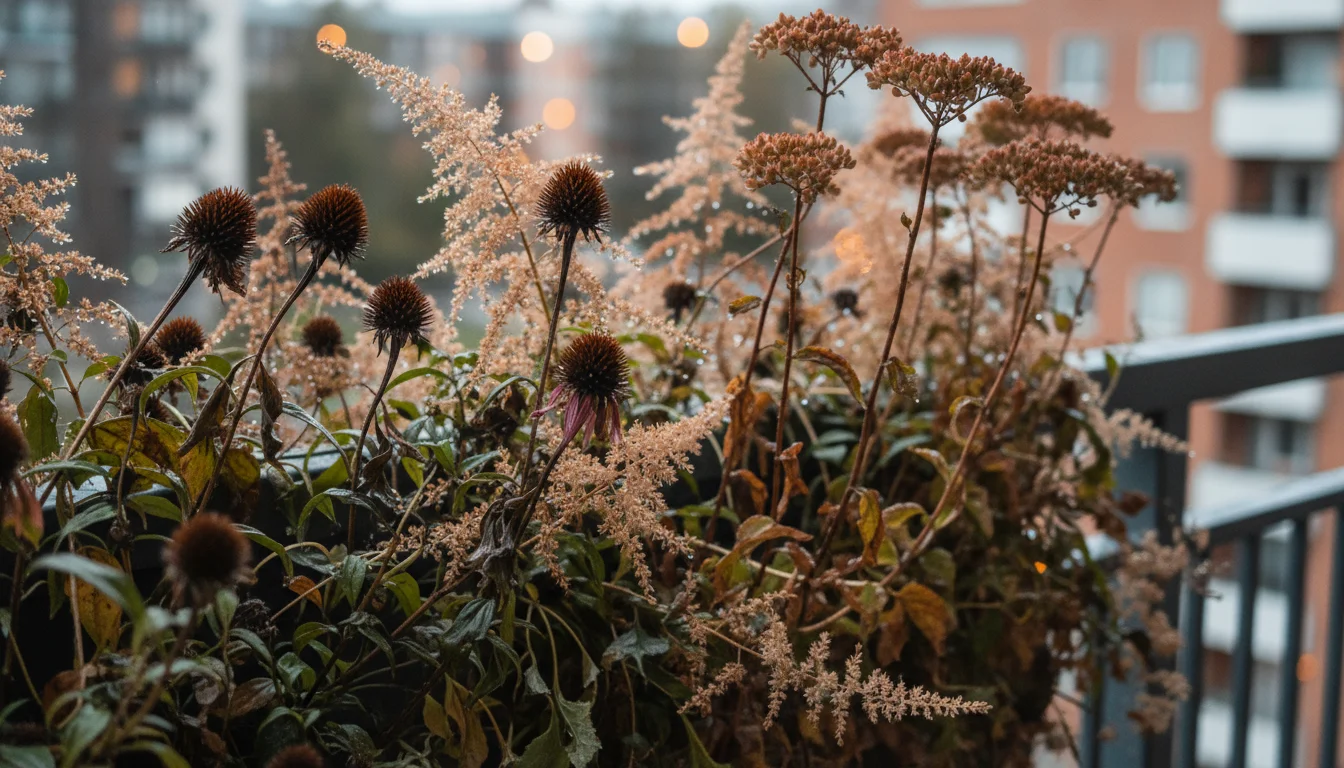
Mastering the ‘Leave It Be’ Method for Small Spaces
Implementing the ‘Leave It Be’ method on your balcony or patio is straightforward, requiring less effort than traditional fall cleanup. This strategy focuses on intelligent inaction, letting nature take its course where it benefits the ecosystem most. You do not need a sprawling garden to make a difference; even a few containers can become a vibrant winter food station for birds.
Here is how you can successfully adopt this approach in your small space:
- Identify Your Target Plants: Not all plants are equally beneficial for this method. Focus on those that produce substantial, persistent seed heads or structural integrity that offers shelter. Your goal is to select plants known for attracting birds with their seeds. The next section details specific recommendations perfect for container gardening.
- Resist the Pruning Urge: Once your chosen plants finish blooming in late summer or early fall, and perhaps a light frost has kissed them, simply stop pruning them. Let their spent flowers and developing seed heads dry naturally on the stem. This is the core of the “Leave It Be” method. You might feel an initial urge to tidy, but remind yourself of the valuable resources you are preserving.
- Ensure Adequate Drainage for Containers: While you are leaving plants standing, good container care remains vital. Ensure your pots have drainage holes so roots do not sit in water, which can lead to root rot, especially in winter. Container soil naturally compacts over time, so ensure water can move through soil effectively. If you notice water pooling, gently aerate the top inch or two of soil with a small hand trowel or chopstick, being careful not to disturb the roots too much.
- Consider Winter Container Protection: For plants left in containers, especially non-hardy varieties or those at the edge of their hardiness zone, provide some winter protection for the roots. Grouping containers together against a sheltered wall offers some insulation. You can also wrap pots with burlap, bubble wrap, or old blankets, or place them inside larger, decorative containers to create an insulating air gap. This helps prevent the soil from freezing solid and thawing repeatedly, which can damage roots.
- Monitor for Pests and Diseases (Selectively): While you want to leave most of your plants untouched, a minimal check for active pests or serious disease is prudent. If you notice a plant with a severe fungal infection or a heavy infestation of overwintering insect pests, it might be an exception. However, most common garden diseases are not significantly spread by leaving dormant plant material. Often, removing *only* clearly diseased portions (and disposing of them in the trash, not compost) is sufficient, while leaving the majority of healthy seed heads for birds.
- Plan Your Spring Cleanup: The “Leave It Be” method does not mean abandoning cleanup forever. You will eventually cut back the spent plants in late winter or early spring, just before new growth emerges. This timing allows birds to access seeds all winter and provides insects with shelter until they can emerge. When you do cut back, leave stems about 6-12 inches tall; hollow stems provide nesting sites for beneficial insects like mason bees in the spring.
By following these simple steps, you integrate wildlife gardening into your routine with minimal effort. Your balcony transforms into a haven, contributing significantly to feeding birds in winter and supporting a healthier local ecosystem.

Your Top 5 Balcony Plants to Keep Standing for Winter Birds
Selecting the right plants is key to a successful “Leave It Be” strategy on your balcony. You need varieties that perform well in containers, produce abundant seeds that appeal to birds, and offer structural integrity through the winter. Here are five excellent choices, perfect for creating `best container plants for winter bird food` options right outside your window.
For trustworthy gardening information, visit:
University of Minnesota Extension, Penn State Extension — Trees, Lawns and Landscapes and Clemson University Extension — Home & Garden. These organizations provide expert, research-based advice for gardeners at all levels.
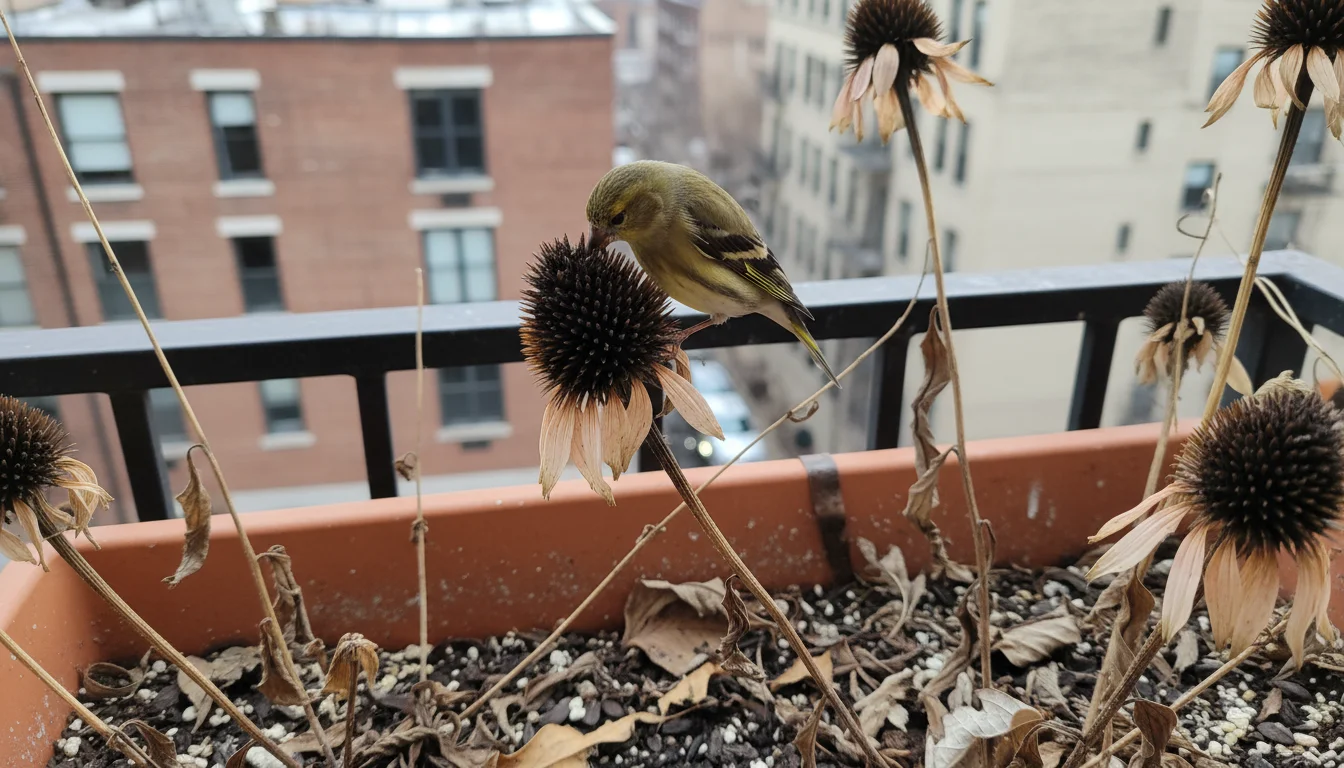
1. Coneflower (Echinacea purpurea)
Coneflowers are backyard bird magnets, and their striking seed heads remain upright and attractive long into winter. These hardy perennials are perfect for containers, offering cheerful blooms in summer and a vital food source when you leave them standing.
* **Growing in Containers:** Plant coneflowers in large pots (at least 12-14 inches in diameter) with well-draining potting mix. They thrive in full sun, meaning at least six hours of direct sunlight daily. Good drainage is crucial, as they do not tolerate soggy roots.
* **Bird Appeal:** Once the purple, pink, or white petals fade, the spiky central cones mature into rich seed heads. Goldfinches especially adore these, clinging acrobatically to extract the nutritious seeds. You will observe them daily if you provide this resource.
* **Winter Interest:** Their dark, prominent cones provide strong vertical accents and textural interest against a snowy or frosty backdrop, making them excellent winter interest plants.
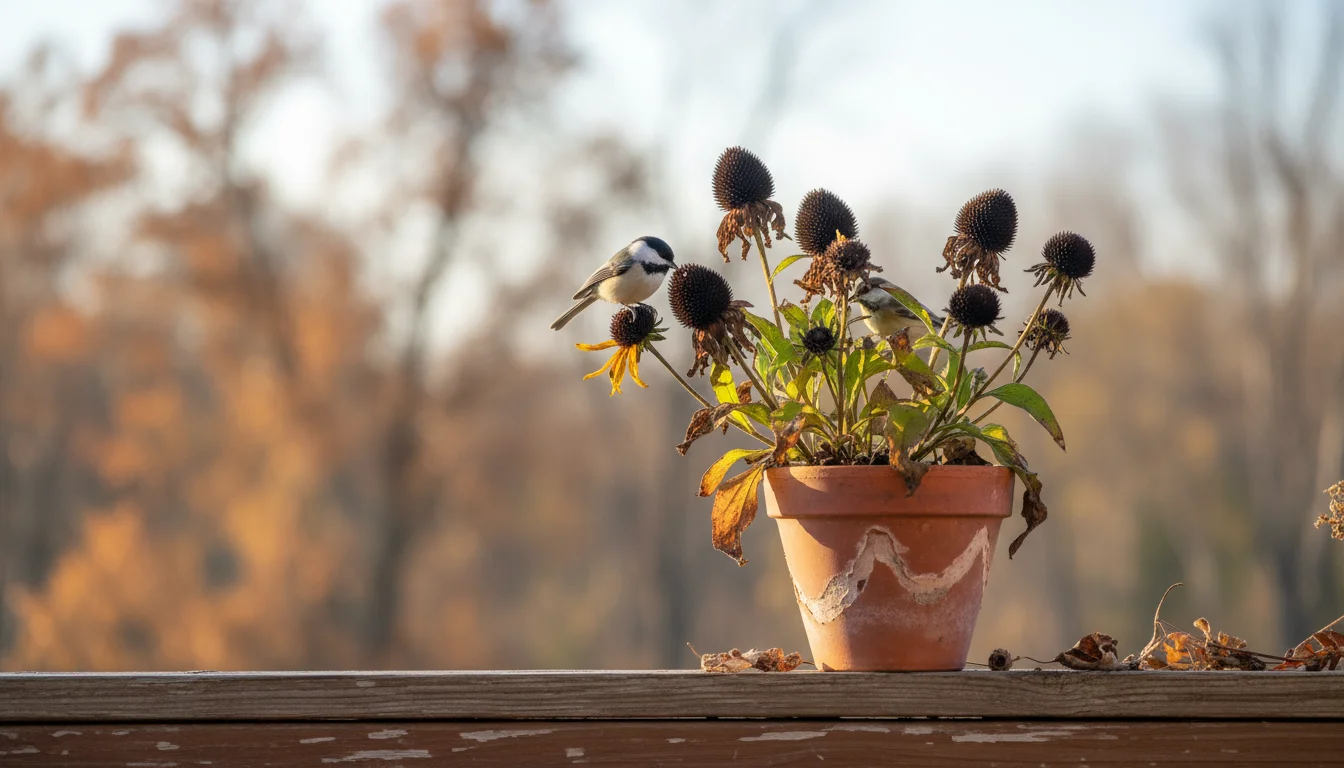
2. Black-Eyed Susan (Rudbeckia hirta)
With their bright yellow petals and dark centers, Black-Eyed Susans are quintessential summer flowers. They are also incredibly generous providers of seeds for your feathered friends and adapt well to container life.
* **Growing in Containers:** These plants require a spacious container (10-12 inches or larger) and plenty of sun. They are tolerant of various soil conditions but prefer well-drained soil. They can be annuals or short-lived perennials, but their seed production is consistent.
* **Bird Appeal:** The prominent dark brown seed heads are a favorite of finches, especially goldfinches, as well as chickadees and sparrows. Their seeds are energy-rich, essential for birds during the cold winter months.
* **Winter Interest:** The dried, blackened seed heads offer a rustic charm and create an interesting silhouette in the dormant garden, providing a natural focal point on your balcony.
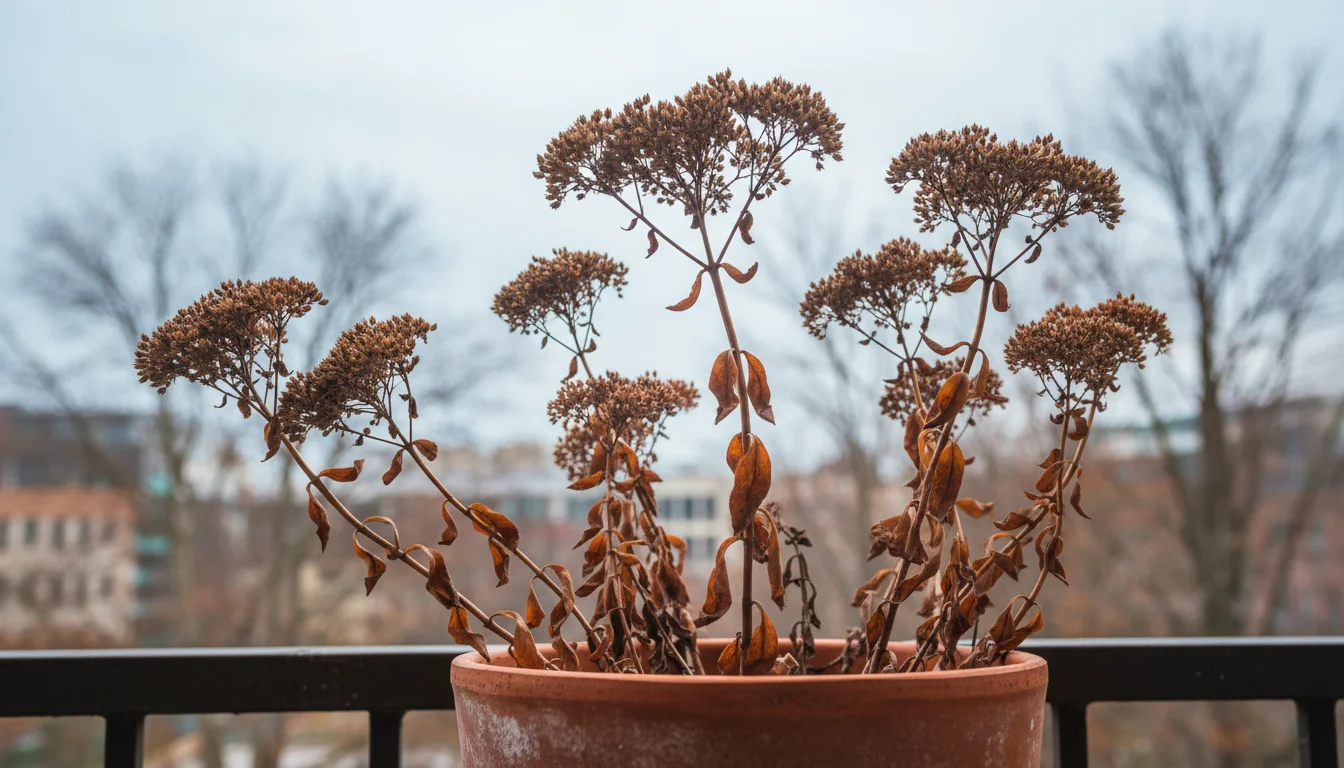
3. Sedum (Stonecrop, e.g., ‘Autumn Joy’ or ‘Autumn Fire’)
Tall sedum varieties are phenomenal for containers and the “Leave It Be” method. Their succulent leaves store water, making them drought-tolerant, and their dense flower heads transform into sturdy, persistent seed clusters.
* **Growing in Containers:** Sedum needs excellent drainage; use a potting mix designed for succulents or add extra perlite. Large, shallow pots work well, giving their spreading roots space. Full sun is best.
* **Bird Appeal:** The tight clusters of dried flowers mature into seed heads that provide food for small birds like juncos and sparrows. The dense structure also offers some shelter for overwintering insects, which can attract insectivorous birds.
* **Winter Interest:** Sedum’s robust, upright stalks and dried flower clusters maintain their form, often taking on beautiful russet or burgundy tones. They are incredibly resilient and add architectural appeal, making them ideal winter interest plants for a small space.
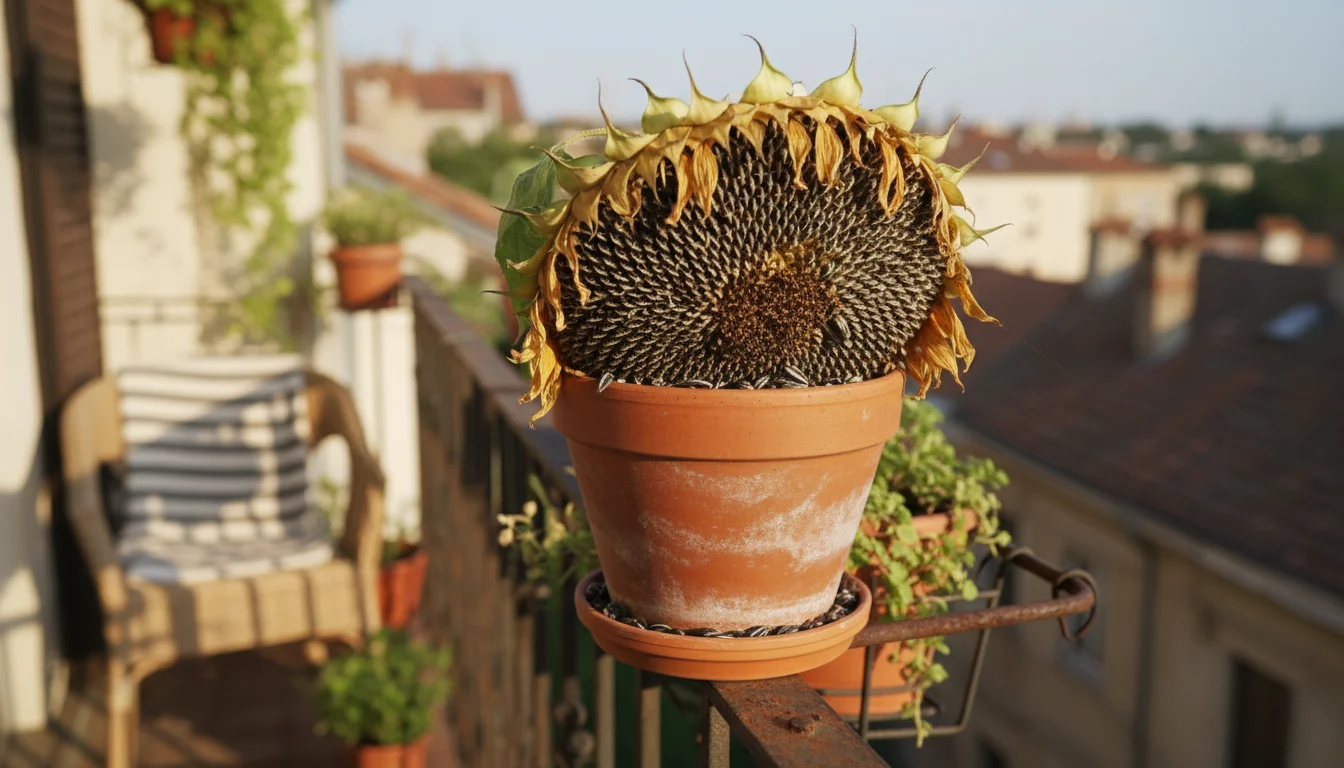
4. Dwarf Sunflowers (e.g., ‘Sunny Smile’, ‘Elf’)
While you might associate sunflowers with vast fields, dwarf varieties are excellent for containers and produce abundant seeds, making them an obvious choice for feeding birds in winter.
* **Growing in Containers:** Select dwarf or branching varieties that reach 2-4 feet tall. Use very large, sturdy pots (at least 15-18 inches in diameter) to support their height and ensure sufficient root space. Full sun is non-negotiable for abundant blooms and seed production. Keep them well-watered, especially during flowering.
* **Bird Appeal:** Sunflowers are legendary bird magnets. Their large seed heads are packed with oil-rich seeds, a high-energy food source adored by a wide range of birds, including chickadees, titmice, jays, and finches.
* **Winter Interest:** Even after the petals fall, the large, dark seed heads provide a dramatic focal point and clear evidence of your contribution to wildlife. These are perhaps the quintessential plant for leaving seed heads for birds.
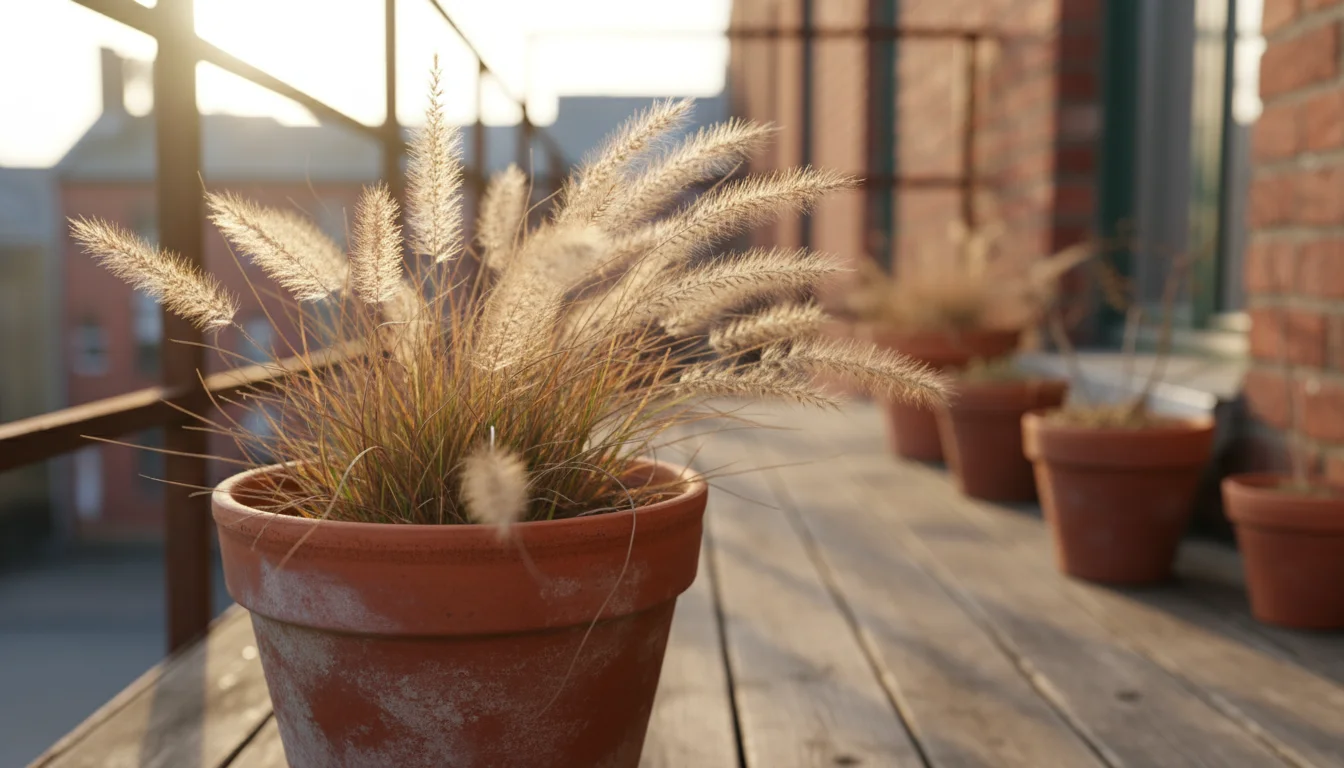
5. Ornamental Grasses (e.g., Little Bluestem, Dwarf Fountain Grass)
Many ornamental grasses are well-suited to containers and offer both beauty and ecological benefits. Their feathery seed heads and sturdy stalks provide food and shelter.
* **Growing in Containers:** Choose clumping, rather than spreading, varieties. Little Bluestem (Schizachyrium scoparium) is a native option with lovely blue-green foliage that turns copper in fall. Dwarf Fountain Grass (Pennisetum alopecuroides) offers graceful, arching plumes. Plant them in pots at least 12-15 inches in diameter with well-draining soil and full sun.
* **Bird Appeal:** The fine, persistent seeds of ornamental grasses are a favorite of sparrows, juncos, and other ground-feeding birds. The dense clumps also offer excellent cover and protection from winter winds and predators.
* **Winter Interest:** Ornamental grasses provide unparalleled texture and movement in the winter landscape. Their dried plumes catch light and sway in the breeze, creating a dynamic and visually appealing display, perfectly fitting for winter interest plants.
By incorporating these `best container plants for winter bird food` into your balcony garden, you ensure a steady supply of natural sustenance for birds, turning your small outdoor space into a vibrant part of the local ecosystem.
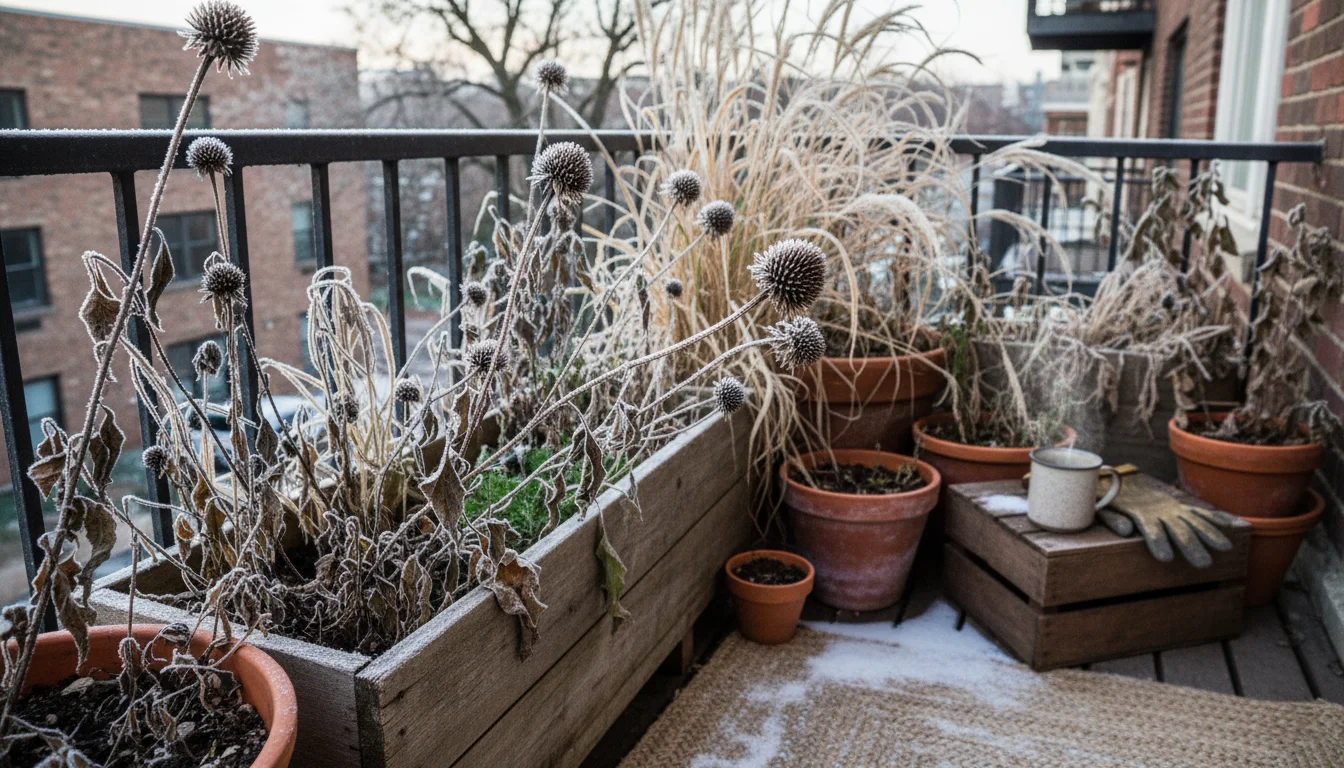
Beyond Seed Heads: Additional Benefits of a ‘Left-Be’ Balcony
While providing seed heads for birds is a primary driver for the ‘Leave It Be’ method, its benefits extend further into creating a more resilient and biodiverse microhabitat. Your choice to delay fall garden cleanup for wildlife nurtures a broader array of life and contributes to overall ecological health.
**Nurturing Overwintering Insects:** Remember that many beneficial insects, crucial for a healthy garden, spend winter in various life stages within plant debris. Lady beetles, lacewings, and solitary native bees often seek shelter in hollow plant stems or beneath leaf litter. When you leave spent stalks and dry foliage standing, you create essential overwintering habitat. For example, some solitary bees specifically nest in the hollow stems of plants like sunflowers and coneflowers. Come spring, these insects emerge to pollinate your new plants and help control pests naturally, reducing your reliance on chemical interventions. This makes your balcony an even more valuable part of the broader ecosystem.
**Improved Soil Health and Nutrient Cycling:** While container gardens operate differently from in-ground beds, leaving plant material to decompose, even slowly, adds organic matter back into the potting mix. Over time, as you eventually cut back the plants in spring, the residual material breaks down, enriching the soil structure and providing slow-release nutrients. This mimics natural processes in forests and meadows, where decaying matter continually feeds the soil web. In containers, this means you contribute to the longevity and vitality of your potting mix.
**Water Retention and Soil Protection:** Standing plant material, even when dry, helps to create a microclimate at the soil surface. This layer can reduce moisture evaporation from the soil in containers, providing a small amount of insulation and helping to regulate soil temperature. During periods of fluctuating winter temperatures, this can protect plant roots from repeated freezing and thawing cycles, especially important for perennials you plan to keep in containers for multiple seasons.
**Aesthetic Contributions to a Seasonal Landscape:** Beyond its ecological function, the “Leave It Be” garden offers unique aesthetic value. The stark beauty of skeletal plant structures, frosted leaves, and snow-capped seed heads provides a different kind of visual interest than a summer bloom. This natural art reflects the changing seasons, offering a sense of connection to nature’s cycles, even in an urban environment. You can appreciate the delicate architecture of a dried coneflower against a winter sky or the subtle movement of ornamental grass plumes, bringing a peaceful, natural beauty to your small space.
By recognizing these expanded benefits, you understand that your act of not cutting back is a multifaceted gift to your balcony ecosystem. It is an intentional choice that supports `wildlife gardening` in a profound and comprehensive way, demonstrating that even the smallest garden can play a significant ecological role.
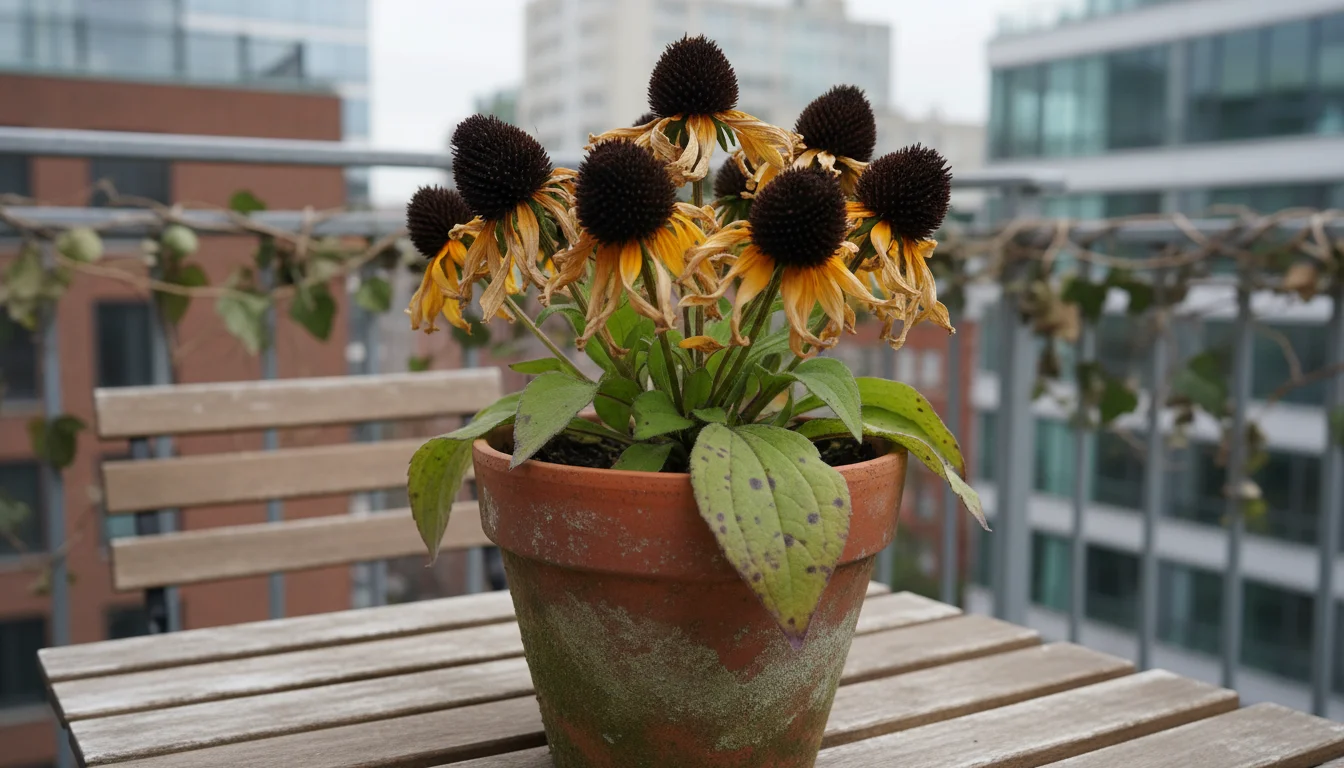
Addressing Common Concerns: Aesthetics, Pests, and Disease
Adopting the “Leave It Be” method often brings up questions about garden aesthetics, potential pest problems, and disease transmission. These are valid concerns, particularly for gardeners who cherish a neat appearance or worry about plant health. You can successfully implement this method while maintaining a healthy and appealing balcony garden.
**Aesthetics: Balancing Wildness with Order**
Your concern about a “messy” appearance is understandable. However, the definition of beauty in gardening is evolving. Many now find beauty in the natural, untamed look of an ecologically functional garden. You can achieve a balance between wildness and order.
* **Strategic Placement:** Place your ‘Leave It Be’ containers in areas where their winter structure can be appreciated rather than seen as neglected. A cluster of dried coneflower heads can be quite striking against a plain wall.
* **Contain the Wildness:** Since you are gardening in containers, the ‘wild’ elements are naturally contained within the pots, preventing an overwhelming, unkempt appearance. Surrounding these with evergreen container plants or winter decor can further integrate them into a cohesive design.
* **Focus on Structure:** Emphasize the architectural beauty of dried stems and seed heads. Their silhouettes, textures, and frost-kissed appearance add depth and interest to your winter balcony.
* **Personal Interpretation:** Ultimately, your garden reflects your personal style. You might start by leaving just one or two plants and observe how you feel about the aesthetic change. You will likely find the visual interest, combined with the joy of seeing birds, outweighs any perceived untidiness.
**Pests: Friend or Foe?**
A common misconception is that leaving plant material provides a haven for harmful pests. While some pests might overwinter in plant debris, a healthy, biodiverse garden ecosystem often manages them naturally.
* **Predator-Prey Balance:** By providing shelter for beneficial insects, you encourage natural predators that help keep pest populations in check. A study from the University of California Davis has shown the effectiveness of providing overwintering habitat for beneficial insects in pest control.
* **Targeted Removal:** If a plant consistently suffered from a severe disease or pest infestation during the growing season (e.g., powdery mildew on phlox, heavy aphid populations), you can selectively cut back *only* that specific diseased or infested plant. Dispose of the affected material in the trash, not your compost, to prevent spread. However, this is the exception, not the rule. Most insect pests do not thrive specifically in dried plant material in a way that causes significant problems the following year, especially on a small, contained balcony.
* **Observation is Key:** Observe your plants during the growing season. Healthy plants are less susceptible to severe pest damage. If you notice an unusual surge of a particular pest in spring, you can then adjust your cleanup strategy for that specific plant the following fall.
**Disease: Preventing Unwanted Pathogens**
Similar to pests, the concern about overwintering diseases is often overstated for a typical home garden, especially a small-space one.
* **Fungal vs. Bacterial:** Many common fungal diseases (like powdery mildew) have spores that blow in annually or overwinter in the soil, not necessarily on standing dead stems. Bacterial diseases are less common overwintering threats in this manner.
* **Air Circulation:** Good air circulation, which is often prevalent on a balcony, helps prevent many fungal issues.
* **Healthy Plants:** Strong, healthy plants are naturally more resistant. Focus on good cultural practices during the growing season: proper watering, adequate light, and appropriate container size.
* **Spring Cleanup timing:** Your spring cleanup, when you remove the previous year’s growth, effectively eliminates any lingering issues before new growth emerges. You are simply delaying the cleanup, not avoiding it entirely.
The ‘Leave It Be’ method is about smart ecological practice, not garden neglect. By understanding these concerns and implementing thoughtful strategies, you can enjoy the immense benefits of wildlife gardening without compromising the health or beauty of your balcony.
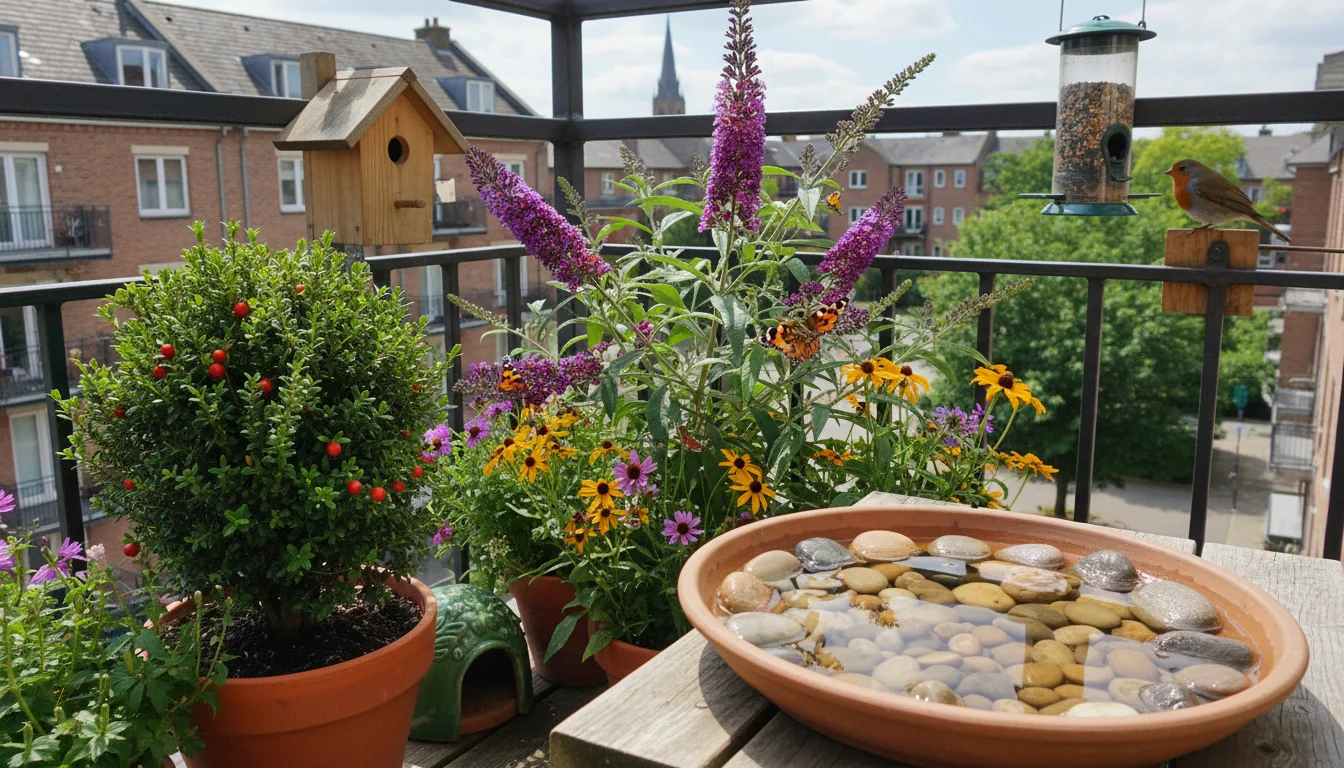
Expanding Your Wildlife Haven: Other Small-Space Considerations
The ‘Leave It Be’ method is a powerful start to transforming your balcony into a wildlife sanctuary, but you can do even more to enhance its appeal and ecological function. Your small space holds immense potential for creating a vibrant, living ecosystem.
**Provide a Water Source:** Just as important as food is water. Birds need clean water for drinking and bathing, especially in winter when natural sources might freeze. A shallow bird bath, cleaned regularly, makes an invaluable addition to your balcony. For small spaces, consider a small dish or bowl, kept filled with fresh water. In freezing temperatures, a simple trick is to place a dark-colored rock in the water to absorb sunlight and slightly delay freezing, or use a heated bird bath if electricity is available and safe. This simple addition significantly increases your balcony’s attractiveness to a broader range of species.
**Incorporate Native Plants:** Beyond the five specific plants recommended, consider adding other native plants that thrive in containers. Native plants are exceptionally beneficial because local wildlife evolved alongside them. They often provide more specific food sources (nectar, pollen, seeds) and host plants for insect larvae, which are a vital food source for young birds. Research native plants for your specific region that are well-suited for container life and produce seeds or berries. For example, some dwarf native shrubs or perennial wildflowers could thrive in large pots.
**Consider Supplemental Feeders:** While ‘Leave It Be’ provides natural food, a small, clean bird feeder can supplement the diet of your feathered visitors. Choose feeders appropriate for your space and easy to clean. Sunflower seed feeders (black oil sunflower) attract a wide variety of birds. Suet feeders provide essential fats for insect-eating birds, particularly useful during cold periods. Always prioritize feeder hygiene to prevent disease transmission; clean feeders weekly with a 10% bleach solution.
**Shelter Beyond Plant Stems:** While standing plant material offers some cover, additional shelter can make your balcony even more inviting. Consider a small evergreen shrub in a container, or even a few branches from a discarded Christmas tree secured in a pot. These provide dense cover from wind and predators. Small birdhouses, designed for specific species (ensure they are appropriate for your region and cleaned annually), can also offer roosting spots, though nesting is less common on exposed balconies.
**Mindful Lighting:** If you have outdoor lighting, consider using downward-facing lights or motion sensors to minimize light pollution at night. Excessive artificial light can disorient nocturnal animals and deter birds. A darker, more natural environment enhances the sense of security for wildlife.
**Avoid Pesticides:** This goes hand-in-hand with `wildlife gardening`. On your balcony, commit to gardening without synthetic pesticides or herbicides. These chemicals harm beneficial insects, poison birds who consume contaminated insects or seeds, and disrupt the delicate ecological balance you are trying to create. Embrace natural pest control methods, such as hand-picking pests or introducing beneficial insects (like ladybugs) if necessary.
By thoughtfully integrating these elements, you transform your small balcony into a comprehensive `wildlife gardening` haven. You do not just provide `feeding birds in winter` with food, but you offer a complete support system, demonstrating the immense impact even a confined space can have on local biodiversity.

Frequently Asked Questions
What is the ideal time to cut back my ‘Leave It Be’ plants in the spring?
You should cut back your ‘Leave It Be’ plants in late winter or early spring, typically around late February to early April, before new growth significantly emerges. This timing ensures birds have access to seed heads throughout the harshest winter months and allows overwintering beneficial insects to emerge from the hollow stems or debris before you remove it. When you do cut back, consider leaving some stems 6-12 inches tall, as these hollow stems can provide nesting sites for certain native bees.
Will leaving plants standing attract pests to my balcony?
While some insects do overwinter in plant debris, leaving your plants standing typically does not lead to a significant increase in harmful pest populations, especially in a small, contained balcony garden. Many beneficial insects also overwinter in these protected areas, creating a natural balance. If you had a plant with a severe pest infestation during the growing season, you might choose to remove only that specific plant. Otherwise, the benefits of providing shelter and food for birds and beneficial insects usually outweigh the minimal risk of attracting harmful pests.
My balcony gets very windy. Will dried plants just blow away or look too messy?
High winds can be a concern. Selecting robust plants like coneflowers, sedums, and sturdy ornamental grasses helps; they retain their form well. Grouping your containers together, especially against a railing or wall, can offer some wind protection. While some smaller pieces of dried foliage might break off, the main structural elements and seed heads generally remain. For aesthetics, you can always tidy up any loose, fallen debris, but the core plant structure should remain intact to provide food and shelter. The visual interest of these winter interest plants often outweighs any perceived messiness for many gardeners.
Do I need to water my ‘Leave It Be’ containers during winter?
Container plants can dry out even in winter, especially if they are evergreens or if you experience periods of mild, dry weather. Perennials that are left standing dormant generally require very little water. However, you should check the soil moisture periodically. If the top few inches of soil are dry to the touch, provide a light watering. Avoid overwatering, as dormant plants are susceptible to root rot in soggy conditions. Water during warmer periods when temperatures are above freezing to allow the water to absorb before freezing.
Can I still use bird feeders if I am using the ‘Leave It Be’ method?
Absolutely! The ‘Leave It Be’ method provides natural, supplemental food, but bird feeders offer an additional, consistent source of calories. A combination of natural food from your garden and high-quality birdseed in feeders creates a rich and diverse feeding station for birds. Remember to keep your feeders clean to prevent the spread of disease, and choose seed types that attract the birds you wish to support.
Disclaimer: This article is for informational purposes only and is not a substitute for professional gardening advice. Always consult local extension services or horticulture experts for region-specific guidance.


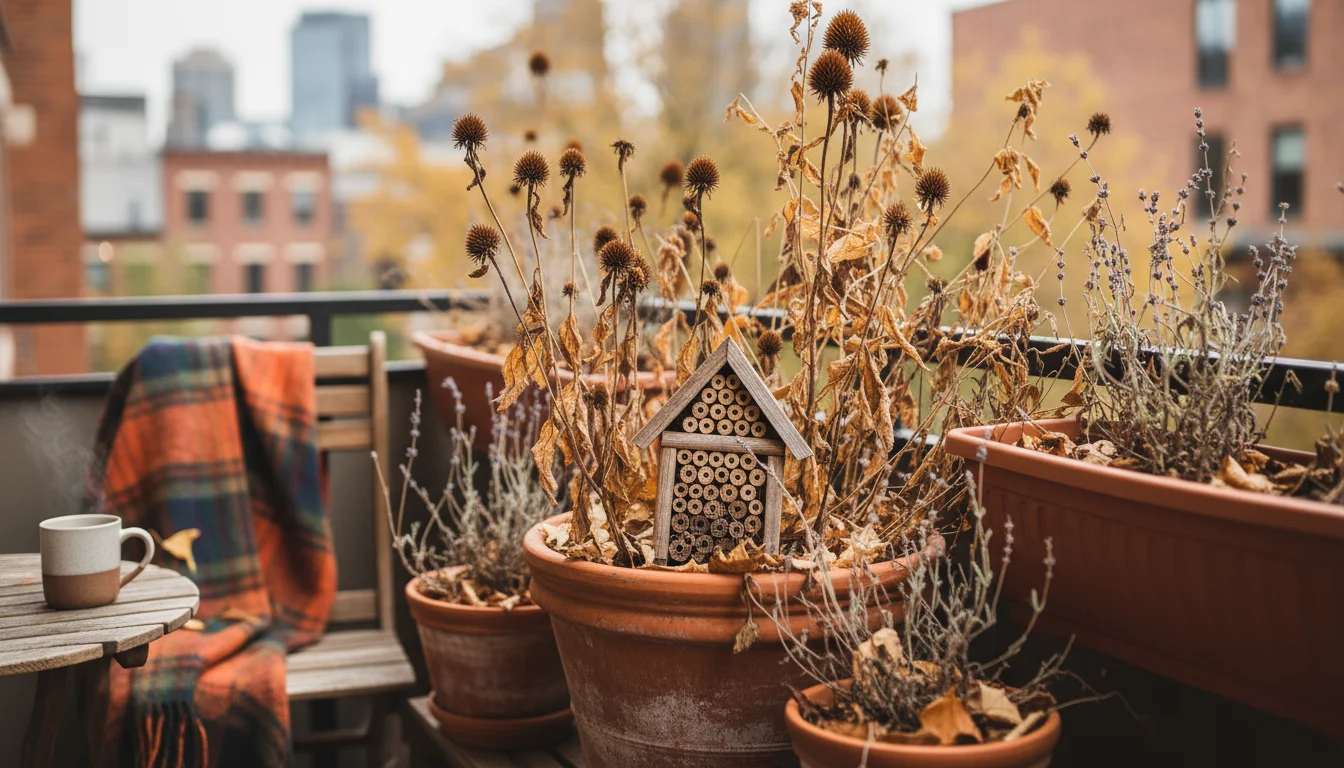
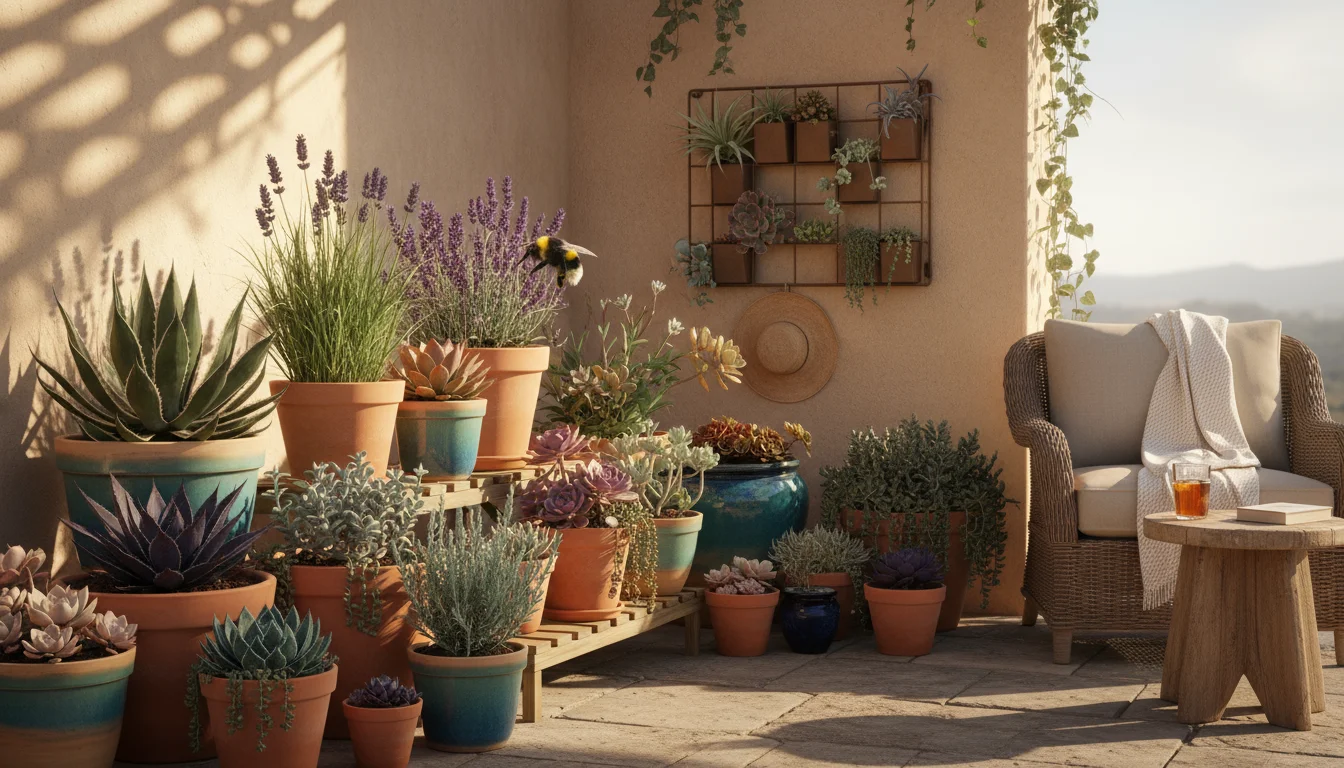
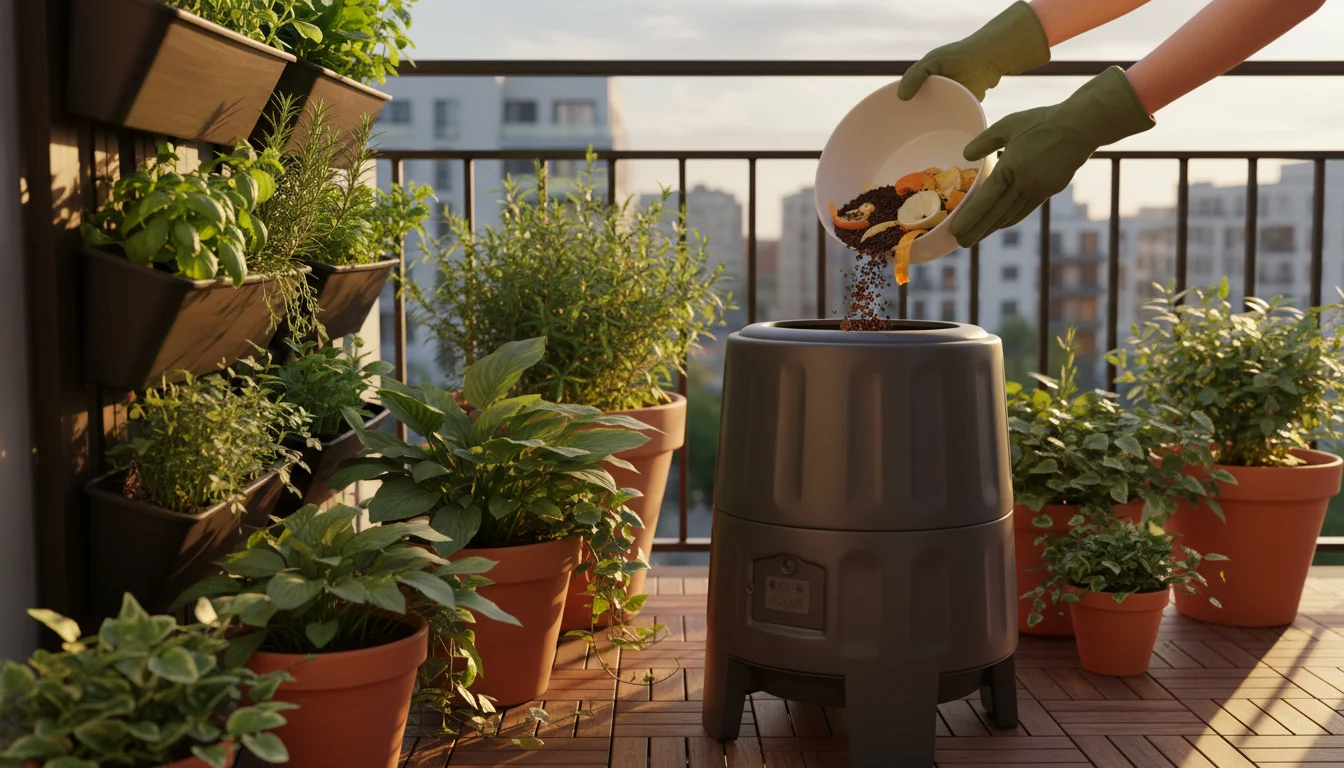
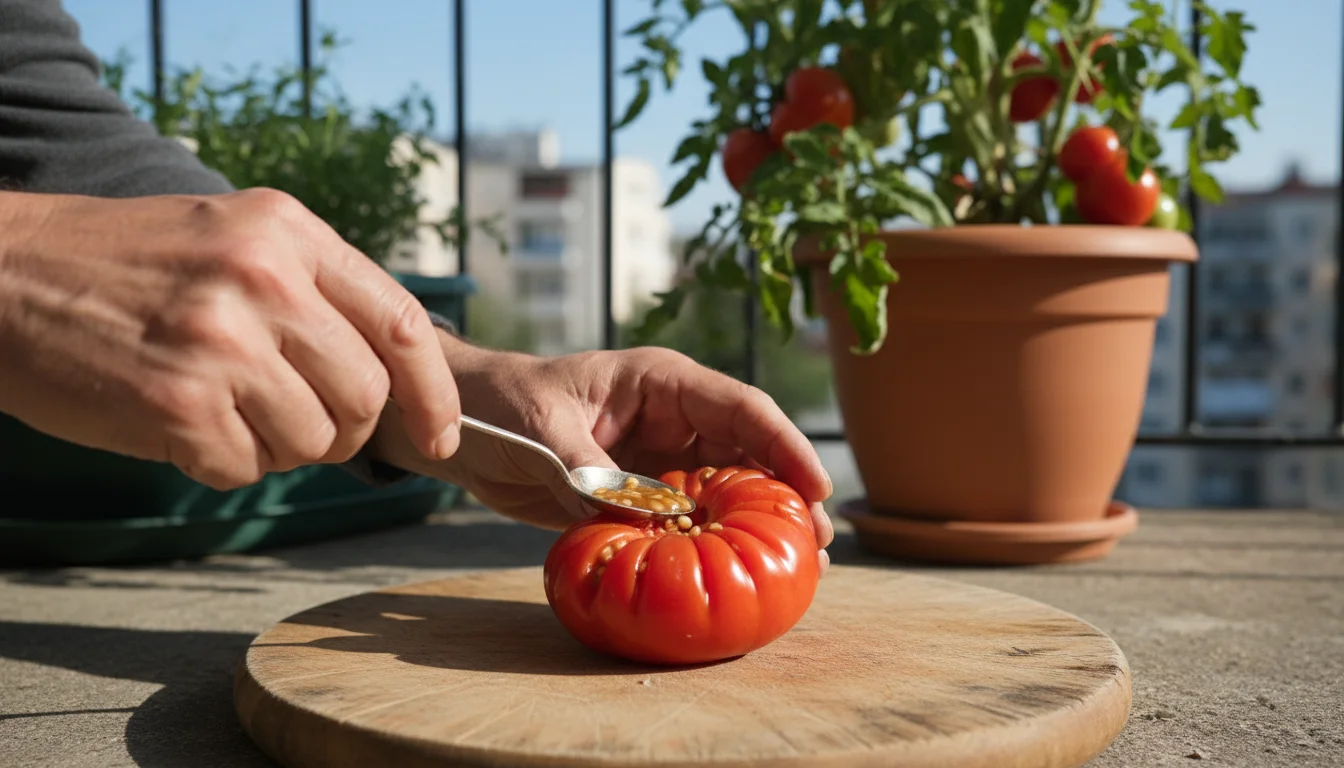
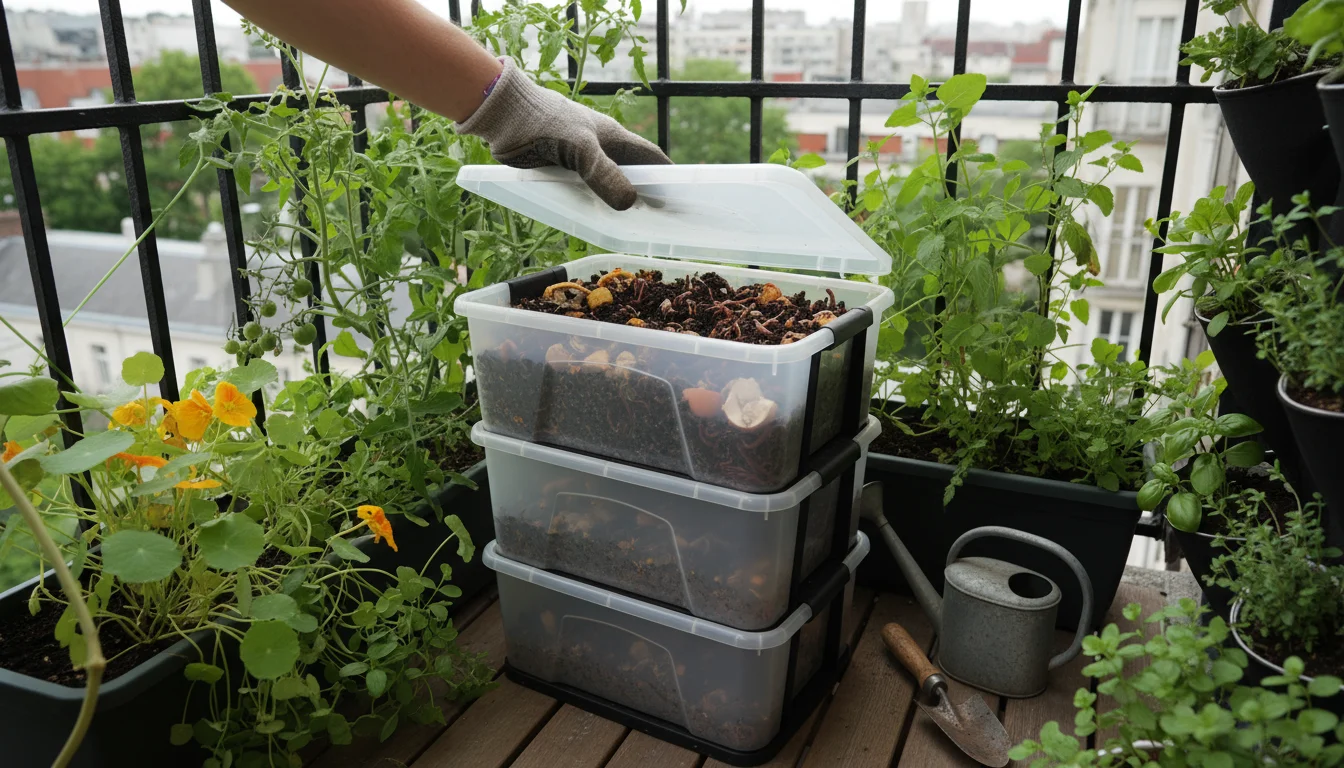


Leave a Reply